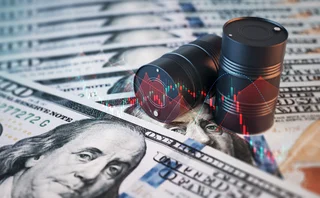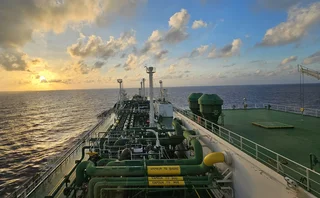Energy Risk Asia Awards 2017: The winners
Societe Generale takes finance house and research gongs; Citi picks up derivatives award

Scroll down to see the list of winners and click here to see photos of the night.
Much has been made of banks fleeing commodities trading over the past few years – and with heavy regulatory pressures and a structural drop in volatility, who could blame them? But those willing to seek out potentially profitable niches in the asset class, be it types of commodities or regions, are reaping the benefits.
Take Societe Generale, successful in both the commodity finance and research house categories in this year’s Energy Risk Asia Awards. One of the bank’s main drivers has of course been China’s substantial commodities markets.
“If you want to be in the metals and mining business you really have to be active in China. The country represents approximately 50% of global demand for a number of commodities,” says Daniel Mallo, the bank’s head of natural resources and infrastructure for Asia-Pacific. “We need to be active in China and we need to understand what is happening in metals in China.”
Gaining a greater presence in China is key to the bank’s long-term bullish outlook on its commodities business, he says. Societe Generale has arranged financing on a number of large-scale transactions in traditional oil and gas projects in the country, but has also gained a lot of traction in renewable energy.
Newer, cleaner energy markets are key to the bank’s long-term plan, according to Mallo: “We see two phenomena: liquidity that seems to be channelled into the asset class, and deal flow building up from a low base.”
The bank has also extended its regional research capabilities, winning plaudits for its positioning analytics – in which it analyses participants’ exposures – and picking up this year’s research house of the year award.
Citi has also benefited from other banks’ departures from commodities, becoming the derivatives house of the year for Asia. The bank has tapped into what it sees as growing demand for over-the-counter derivatives among Asian commodity hedgers, notably Chinese oil refiners.
China’s impact is also evident elsewhere in the awards: BNP Paribas picks up both precious and base metals awards, much of that down to its growing consumer markets in Shanghai and Dalian. China’s maturing oil market has also seen domestic banks enter the fray with earnest in recent years: Bank of China International has educated a number of the country’s refineries on the benefits of hedging, and picks up our oil and products house award.
Below, you’ll find profiles of all our winners, highlighting some of the reasons that have made them stand out. The Energy Risk Asia Awards are decided by the Energy Risk editorial team following a lengthy vetting process in which our judges examine each firm’s accomplishments and speak to its clients and counterparties. The awards are not intended to honour those with the greatest market share or revenues, but rather to highlight those firms that are most appreciated by their clients and who provide the most innovative products in the eyes of our judging panel.
Data provider of the year, Asia
Thomson Reuters
ETRM/CTRM software house of the year, Asia
Openlink
Commodity research house of the year, Asia
Societe Generale
Thomson Reuters
SGX
Commodity broker of the year, Asia
BNP Paribas
Oil & products house of the year, Asia
BOCI
Precious metals house of the year, Asia
BNP Paribas
Base metals house of the year, Asia
BNP Paribas
Commodity finance house of the year, Asia
Societe Generale
Derivatives house of the year, Asia
Citi
Correction, November 23, 2017: The original version of the article wrongly implied that a decline in oil prices had played a major role in banks’ withdrawal from commodities trading. It has been amended.
More on Risk management
CRO interview: Shawnie McBride
NRG’s chief risk officer Shawnie McBride discusses the challenges of increasingly interconnected risks, fostering a risk culture and her most useful working habits
Increasingly interconnected risks require unified risk management
Operational risk is on the rise according to a Moody's survey, making unified risk management vital, say Sapna Amlani and Stephen Golliker
Energy Risk Europe Leaders’ Network: geopolitical risk
Energy Risk’s European Leaders’ Network had its first meeting in November to discuss the risks posed to energy firms by recent geopolitical developments
Energy Risk US Leaders’ Network: tackling volatility
Energy Risk’s inaugural US Leaders’ Network convened in Houston in October to discuss risk management challenges caused by geopolitical upheaval, policy uncertainty and volatility
LNG trading strategies set to change amid major market shifts
The global LNG market is on the brink of significant changes set to alter trading dynamics and market behaviour, say analysts
Why commodity finance is ripe for stablecoin
Digital currency brings cost efficiencies to financing, but its real benefit to commodity firms lies in making huge pools of new capital available, write Jean-Marc Bonnefous and Ronan Julien
US shutdown leaves commodity traders without key data
Commodity traders are ‘flying blind’ without Commitment of Traders reports
Energy Risk at 30: Learning from the past
Energy Risk looks back at the seminal events and developments that have shaped today’s energy markets







